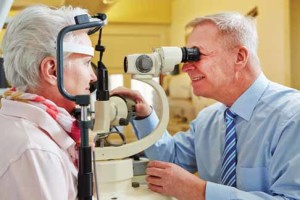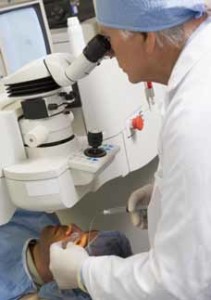Cataracts improved technology and surgery
 Cataracts are the most common cause of decreased vision. Almost everyone will have some degree of cataracts after age 65, but cataracts can often be detected earlier and even in children, although rarely. Cataracts are not a “growth” or film over our eye, but a natural process of clouding and darkening of the natural lens in our eyes.
Cataracts are the most common cause of decreased vision. Almost everyone will have some degree of cataracts after age 65, but cataracts can often be detected earlier and even in children, although rarely. Cataracts are not a “growth” or film over our eye, but a natural process of clouding and darkening of the natural lens in our eyes.
Because cataracts often progress slowly, just having cataracts does not mean they need to be removed. Only when cataracts cause difficulty with our vision -difficulty seeing at night, seeing street signs, needing more light to read, color vision problems (been wearing one navy blue sock and one black one?) do we need to consider having cataract surgery.
The treatment of cataracts has seen tremendous advancements since our grandparents had surgery 40-50 years ago. They often had hospital stays of 4-6 days, with “sand bags” around their heads to keep them from moving. Today, cataract surgery rarely takes longer than 15 minutes, and most patients return to normal activities and exercise within 5 days of surgery.
 Most cataracts are removed by “phacoemulsification”, using high frequency sound waves to break up the cataract, which is then removed with a small vacuum. A plastic lens implant is then rolled up and injected into the eye. The lens unfolds inside the eye, and replaces (or improves!) the focusing power of our natural lens/cataract.
Most cataracts are removed by “phacoemulsification”, using high frequency sound waves to break up the cataract, which is then removed with a small vacuum. A plastic lens implant is then rolled up and injected into the eye. The lens unfolds inside the eye, and replaces (or improves!) the focusing power of our natural lens/cataract.
Phacoemulsification has been the standard for modern cataract surgery for about 40 years now, but new technologies are being developed. “Laser assisted” cataract surgery uses a “femtosecond laser” to make the incisions in the eye and “precut” the cataracts for easier and quicker removal. The standard phacoemulsification equipment is still necessary to remove the softened cataract however, so the new laser technology does not shorten the time the patient is in surgery, and some problems were noted with the earliest cases. “Laser cataract surgery” is not covered by insurance, and adds thousands of dollars to the patient’s costs. However, as this new technology improves, and ophthalmologist-eye surgeons learn better ways to utilize it, it may make cataract surgery safer and easier.
Although cataract surgery is very successful as with any surgery, there are some risks. Infections occur rarely, in about 1 of every 1000 surgeries.
Swelling of the cornea (clear front portion of the eye) can occur, particularly in patients who have a corneal problem called Fuch’s dystrophy. Some medications, like Flomax/ tamulosin can predispose patients to surgical complications by causing a condition called “Floppy Iris Syndrome”. It’s important to tell your ophthalmologist about all medication you are taking in advance of your surgery.
There have been new developments in lens implants also. Multifocal lens implants that allow patients to see near, intermediate, and distance without glasses have become popular in recent years. But these lenses are not for everyone. Some patients are bothered by glare and halos at night, decreased vision in dim light, and unwanted reflections. These lenses may not work well in patients with dry eyes, corneal abnormalities or macular problems, so discuss these issues with your surgeon before choosing these lens implants.
Cataract surgery is the most frequently performed and arguably the most successful surgery done today. Taking some precautions and talking with your surgeon before your operation can help assure you have a great outcome!

Leave a Reply
Want to join the discussion?Feel free to contribute!